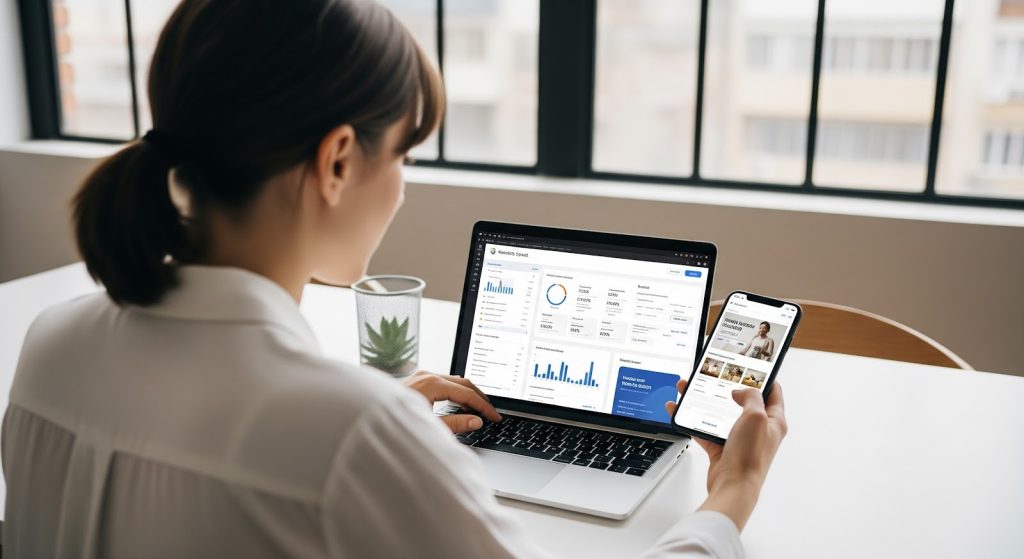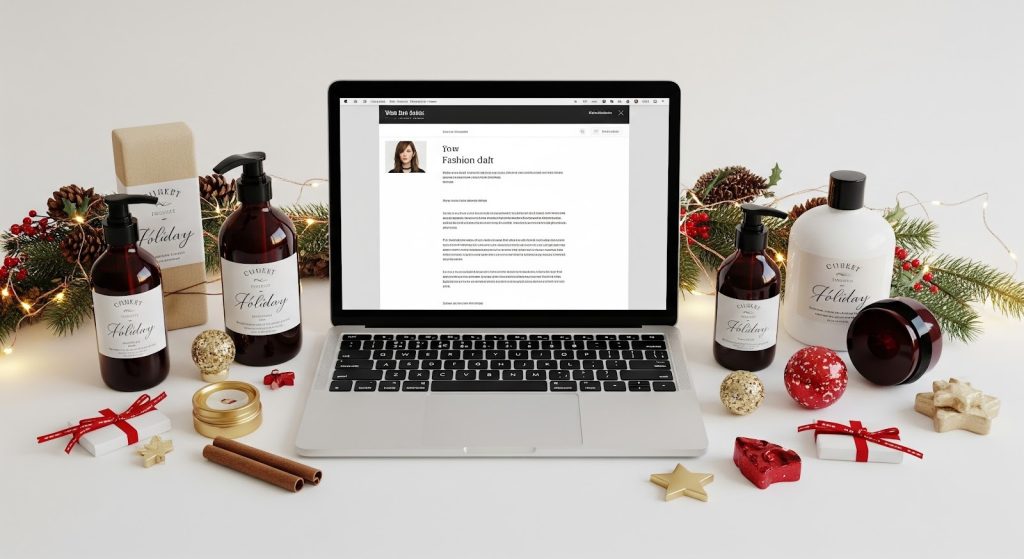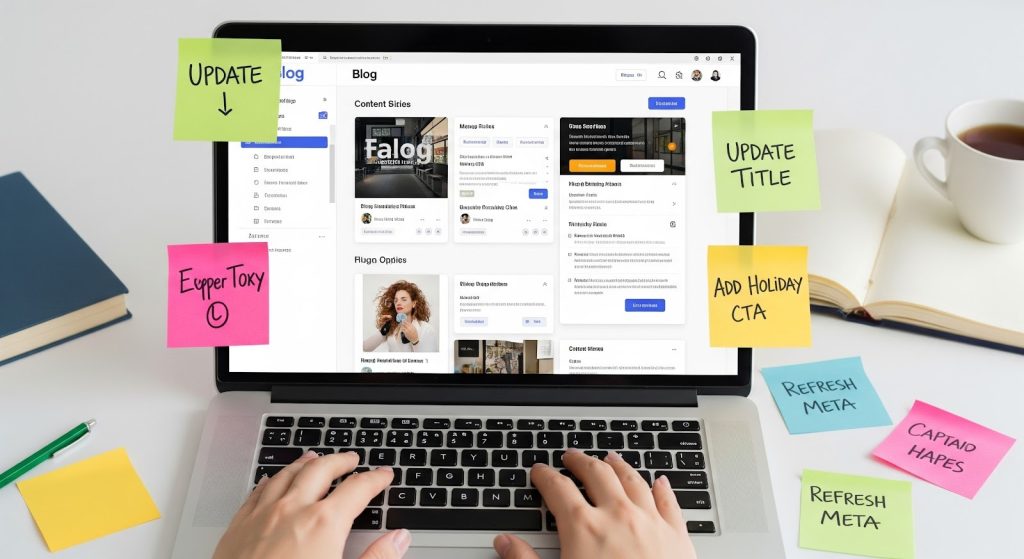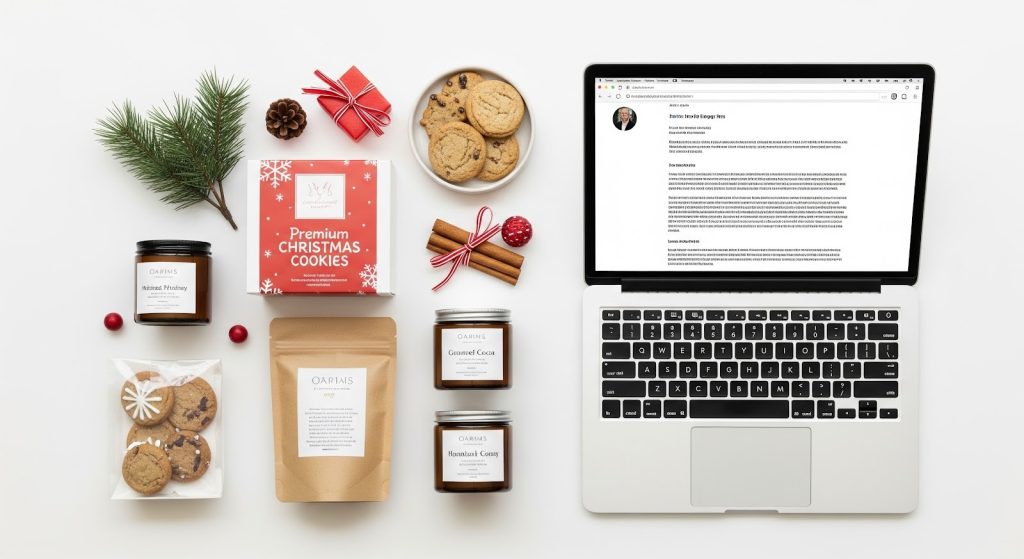
Let’s get one thing straight: if your Shopify SEO strategy kicks off the week before Black Friday, you’re already late. Not fashionably late. Like, “doors closed, deals claimed, sorry-you-missed-it” late.
Because while everyone else is obsessing over what email to blast out on Thanksgiving night, smart store owners are doing something way more powerful — building momentum. Quietly. Organically. Weeks before the first ad even runs.
See, SEO doesn’t move at the speed of sales. It’s not about slapping up a “50% OFF!” badge and hoping Google gives you a digital high-five. It’s about laying groundwork — content, keywords, structure — so that when Q4 hits, your Shopify store is already standing tall on page one.
Let’s break it down. Why start your Shopify SEO strategy early?
- Organic rankings take time. Google needs to crawl, index, test, and trust your content. That’s not happening overnight.
- Holiday traffic spikes start in October. Buyers don’t wait till Black Friday to research gifts — they start searching early, and the stores that show up first often win.
- Paid ads get expensive fast. SEO lets you sidestep the ad auction chaos and capture traffic without bidding wars.
- You feed your funnel. Organic visits in October become retargeted buyers in November. It’s like dating before you propose.
And here’s the kicker: people trust what they find more than what they’re shown. If your site ranks high because it’s relevant, valuable, and aligned with their intent? That’s a whole different level of authority than interrupting someone’s scroll with a coupon code.
So if you’re still treating SEO like some boring backend chore, time to reframe it. It’s your unpaid sales team, showing up 24/7, whispering “Hey, this product might just be exactly what you need.”
The brands that win Q4 don’t start in Q4. They start now — optimizing pages, refreshing keywords, building links, writing blog posts people actually want to read. They understand that every early move they make compounds over time.
Imagine this: it’s November 1st. Your blog is ranking for “Top Eco-Friendly Gifts for 2025.” Your product page shows up for “Black Friday deals on minimalist watches.” You’ve got holiday collection pages live, fast-loading, and filled with intent-driven keywords.
Your competitors? They’re still Googling “how to do SEO fast.”
Start now. Be the store that shows up before everyone’s ready to buy — and sticks around long after they’ve checked out.

Audit Your Shopify Site for On-Page SEO Optimization
Before we talk about holiday keywords or gift guides or how to sneak “best [product] Black Friday 2025” into a headline — let’s talk about your foundation. Because if your Shopify site optimization is shaky, no amount of clever copy or catchy titles is going to save you.
On-page SEO is like brushing your teeth. If you only do it before a date (ahem, Black Friday), it’s pretty obvious — and a little gross.
Let’s clean things up.
1. Page Speed: Make It Fast or Kiss Rankings Goodbye
Nothing kills conversions — or rankings — faster than a slow site. Google’s been saying it for years: speed matters. And in the holiday rush, it matters even more. Nobody’s sticking around for your 3-second hero banner when there’s a competitor with the same product and a faster load time.
Quick wins:
- Compress those beautiful high-res images. We get it, you love them. But if they’re 5MB each, they’re costing you traffic.
- Ditch unnecessary Shopify apps. The “fun snowflake animation” you installed last year? It’s still tanking your load speed.
- Use tools like PageSpeed Insights or GTmetrix to test mobile and desktop performance — then fix what’s dragging you down.
2. Mobile UX: It’s Not Optional, It’s Priority #1
Holiday shoppers are scrolling from their phones while watching Netflix, waiting in line, or hiding in the breakroom. If your store isn’t optimized for a smooth, intuitive mobile experience, they’re out faster than a one-day shipping deal.
- Use large, tappable buttons. No one should need surgical precision to click “Add to Cart.”
- Make sure your fonts are legible on small screens — especially your product titles and CTAs.
- Ensure sticky CTAs and one-click checkout options work flawlessly across devices.
Reminder: Google indexes mobile-first, so if your desktop version is flawless but your mobile version is a hot mess… you’ve got problems.
3. Metadata That Actually Matters
Your meta titles and descriptions aren’t just SEO checkboxes — they’re your store’s pickup line on Google. They should be clear, keyword-rich, and compelling enough to earn a click from distracted, deal-hunting shoppers.
Example (bad): “Shop Now – Home”
Example (better): “Sustainable Coffee Gifts for Black Friday | BrewCo”
Yes, you should include your primary holiday keywords. But don’t keyword-stuff. Nobody searches for “Black Friday Black Friday deals for Black Friday mugs on Black Friday.” You’re not fooling anyone — especially not Google.
Also: don’t forget image alt text. Not just for accessibility (though yes, that matters), but also for visibility in Google Image Search. Add descriptive, keyword-friendly alt text to product photos, hero images, and lifestyle shots.
4. Schema Markup: The Secret Weapon of Visibility
Want your product pages to show up in search with pricing, ratings, and availability info? That’s schema. And if you’re not using it, you’re handing visibility to someone else.
Shopify supports schema markup, but not always out of the box. You may need a developer — or an app like JSON-LD for SEO — to get your structured data sorted.
Focus on:
- Product schema
- Review/rating schema
- Offer/price schema
- Breadcrumb schema for navigation clarity
Rich results equal richer click-through rates. And richer CTRs equal — you guessed it — more revenue.
5. Internal Linking: It’s Not Just for Blogs
Most store owners think internal linking is a blog-only play. Not true.
Your homepage should link to your bestsellers. Your holiday landing pages should link to relevant collections. Your product descriptions? Add a line or two about bundles, gift sets, or accessories — and link them.
Internal linking helps Google crawl your site, understand page importance, and distribute authority. Bonus: it helps your customer discover more (and buy more).

Target Holiday-Specific Keywords Early
You ever watch someone frantically wrap presents on Christmas Eve with duct tape and grocery bags? That’s what last-minute keyword targeting looks like. Messy. Desperate. Not something that screams “I planned for this.”
So let’s not do that. Instead, let’s build your Shopify SEO strategy with holiday-specific keywords baked in early, like gingerbread cookies with just the right amount of spice.
Because here’s the deal: everyone and their marketing intern is going to target “Black Friday deals” the week of Black Friday. But smart store owners? They’re ranking weeks in advance — because they started in September while the rest of the world was still pretending summer wasn’t over.
Why You Need to Start Early
Google doesn’t hand out page-one trophies overnight. It needs time to crawl, index, test, and decide if your content’s worthy of that sweet organic traffic. If you’re creating landing pages and blog posts on November 23rd, your chances of ranking before the turkey hits the table? Slim to none.
Start early and you can:
- Capture early-bird shoppers doing research in October
- Rank ahead of lazy competitors who waited too long
- Build link equity over time so you own the SERP come peak season
And the best part? Once you’re there, you’re hard to dethrone.
Holiday Keyword Goldmines (You Can Actually Rank For)
Let’s get real: unless your name is Amazon, you’re not going to rank for “Black Friday deals.” But that’s okay — because the real magic happens in the long-tail.
Start targeting:
- “Gifts for [your niche]” – Gifts for coffee lovers, gifts for dads who run marathons, gifts for people who hate mornings
- “Best [product] for [2025 or holidays]” – Best planners for 2025, best cozy blankets for winter, best eco-friendly candles
- “Black Friday [product] deals” – Black Friday backpack deals, Black Friday skincare sales
- “Under $50 [product] gifts” – Holiday gifts under $50 for book lovers, under $25 stocking stuffers
These phrases are specific. Searchers have intent. And if you’re one of the few stores actually creating content for them, you win.
Pro tip: use a mix of Google Trends, Ahrefs, and the good old autocomplete bar to find what real humans are typing. You’re not guessing — you’re researching.
Where to Use These Keywords
Once you’ve got your list, don’t just sprinkle them around like SEO seasoning. Be strategic:
- Use them in page titles, H1s, H2s
- Write meta descriptions that hit both keywords and urgency
- Optimize image alt text (don’t forget this!)
- Include them naturally in product descriptions, collection pages, and blog posts
And if you’re feeling spicy, turn that keyword into a blog post or guide:
- “10 Best Holiday Gifts for Plant Moms in 2025”
- “Black Friday Deals on Vegan Skincare (That Actually Work)”
- “Gifts for Dog Owners That Aren’t Chewed Up in 5 Minutes”
This isn’t just good for SEO — it gives you juicy content to share on email and social. Double dip, friends.
Don’t Forget Voice Search + Conversational Queries
More and more people are using Siri, Alexa, and whatever voice assistant their phone’s listening through to find what they need. That means your keywords should sometimes sound like questions or phrases, not just search terms.
Try:
- “What’s a good holiday gift for teachers under $20?”
- “Where to find sustainable wrapping paper Black Friday?”
Sound human. Be helpful. That’s what Google loves.

Build Seasonal Landing Pages That Actually Rank and Convert
Seasonal landing pages are like holiday decorations for your Shopify store — when done right, they grab attention, set the mood, and drive people straight to checkout.
But unlike string lights and pine-scented candles, these beauties do more than look festive. They work — bringing SEO juice, conversion power, and a way to corral your Black Friday madness into one neat, clickable package.
If your Shopify SEO strategy doesn’t include seasonal landing pages, you’re leaving traffic, sales, and holiday cheer on the table.
Why You Need Dedicated Seasonal Pages
First, let’s squash a myth: you don’t need to reinvent your homepage every November. What you do need is a targeted landing page built specifically for the keywords you want to rank for and the shoppers you want to convert.
It’s the difference between a messy “holiday sale!” banner slapped on everything… and a polished experience that says:
“Welcome, gift-givers. We’ve curated something special just for you.”
Here’s what seasonal landing pages bring to the table:
- SEO targeting for long-tail keywords (remember those “gifts for…” phrases?)
- A single place to drive traffic from email, social, ads, and organic search
- Improved conversion rates because the content matches the intent
Think of it like your own pop-up holiday shop—without the overhead or bad mall lighting.
How to Build a Shopify Landing Page That Ranks
Don’t overcomplicate it. Your page doesn’t need 75 product widgets and a blinking snowflake gif. You just need a smart structure.
Start with this:
- URL structure: Keep it clean. Example: yourstore.com/holiday-gift-guide or yourstore.com/black-friday-deals
- Headline: Make it keyword-rich and customer-focused — “Holiday Gifts for Plant Lovers (2025 Edition)”
- Subhead: Highlight urgency or value — “Limited quantities. Free shipping through December 10.”
- Featured products or collections: Curated, not dumped. Think gift bundles, top sellers, staff picks.
- CTA buttons: Obvious, action-based, and above the fold. “Shop the Gift Guide,” “See Black Friday Deals”
- Supporting copy: Include your seasonal keywords naturally in short paragraphs and bullet points
- Trust elements: Reviews, shipping deadlines, return policies — show you’re ready for holiday traffic
Bonus move: embed a holiday-themed video or customer testimonial. Show the human side of your brand. It’s SEO with personality.
Don’t Forget Internal Links
This one’s sneaky-powerful. Your seasonal landing pages should be easy to find from within your site.
- Link from your homepage banner
- Add links in collection descriptions (“Looking for holiday gifts? Check out our 2025 Gift Guide.”)
- Include links in your blog posts and even product FAQs
Why? Because Google follows links. And the more internal links you have pointing to a page, the more important Google thinks it is.
Oh — and visitors? They like easy navigation too.
Can You Reuse It Next Year? Heck Yes.
One of the best parts about building seasonal pages is that they’re reusable assets. You can dust them off, update the year and the copy, swap out a few products, and boom — you’re ready for the next Q4 without starting from scratch.
Just don’t delete them after the holidays. Redirect traffic to a relevant page or keep them live as evergreen gift guides. SEO equity is real — and fragile.
Pro-Tip: Build Before You Blast
If you’re planning a holiday email campaign or paid ads, build your seasonal page first. Then drive traffic there with confidence, knowing it’s optimized for both humans and search bots.
Remember: your offer could be incredible, but if the landing page feels like it was thrown together in the Target parking lot, conversions will suffer.

Update Existing Content for Holiday Search Intent
You already did the hard part: you published blog posts, wrote product descriptions, maybe even launched a buyer’s guide back in June. But here’s the twist — Google doesn’t care that your blog post from July still slaps unless you tell it why it matters now.
Updating existing content for holiday search intent is the secret SEO weapon most Shopify store owners forget about. It’s like tuning up your car before a road trip: the machine already runs, but now it’s ready to perform when it counts.
If you want your Shopify SEO strategy to dominate the holiday SERPs, it’s time to polish your existing content for seasonal relevance.
Start with Your Blog Archive
Crack open your blog library. The goal isn’t to rewrite everything — it’s to layer in holiday intent so your posts answer the questions customers are googling right now.
Let’s say you wrote a blog post called “How to Choose the Perfect Candle for Your Mood.” Great. Now reframe it as:
“Holiday Candle Gift Guide: How to Choose the Perfect Scent for Everyone on Your List”
Same content foundation, new angle. And with that angle comes holiday SEO keywords like:
- “gifts for candle lovers”
- “holiday candle gift ideas”
- “best candles 2025”
Update the title, the H1, maybe the intro paragraph and a few bullet points. Add a holiday-themed call-to-action (“Shop our Holiday Candle Collection”) and suddenly, it’s not just content — it’s seasonal sales fuel.
Add Seasonal Hooks to Product Pages
Yes, even your product pages can — and should — get a seasonal tune-up.
If your product description has been coasting since last Q1, it’s time to weave in gifting intent.
Examples:
- “Makes the perfect stocking stuffer for coffee lovers”
- “Limited holiday edition – only available through December”
- “Get it in time for Christmas with express shipping”
This kind of content doesn’t just help SEO — it makes the page feel timely and urgent, nudging hesitant shoppers toward “Add to Cart.”
Pro tip: Don’t forget alt text. Updating image alt tags with keywords like “holiday gift set” or “2025 Black Friday deal” is a tiny tweak that can yield big results.
Refresh the Year. Yes, Really.
Google likes fresh content. You know what looks stale? “Best Gift Ideas for 2023” when it’s almost 2026.
Update the year. Everywhere. Titles, meta descriptions, URLs (only if you set up redirects!), headers — keep them current.
Freshness isn’t just a vibe, it’s a ranking signal. And holiday SEO is a freshness arms race.
Update Metadata with Holiday Copy
This is the most skipped step, and arguably the most valuable.
Pull up your best-performing content in your Shopify dashboard or SEO tool. Rework the meta title and meta description with holiday search terms:
- Meta Title: “Top Stocking Stuffers for Coffee Addicts (2025 Edition)”
- Meta Description: “Looking for coffee-themed stocking stuffer gifts? These small but mighty gift ideas will delight any caffeine fan on your list.”
Now you’re optimizing for both clicks and seasonal relevance.
Cross-Link Old Content to New Landing Pages
Don’t forget to create SEO bridges between your content.
Got an evergreen blog post about your product’s origin story? Add a line at the bottom:
“Looking for gifts? Check out our 2025 Holiday Collection.”
That internal link tells Google the holiday page matters, and it helps guide your readers to where the action is happening this season.
One Final Note: Don’t Bury the Update
If you’re refreshing a blog post, add a note at the top:
“Updated for 2025 Holiday Shopping Season”
It signals to readers that the info is fresh, and Google crawlers take note too.
This is how you make the content you already have do holiday-heavy lifting. No 100-hour blog sprints. No all-nighters writing gift guides from scratch. Just smart, strategic updates that keep your brand relevant — and revenue flowing — when it matters most.

Build Backlinks for Holiday Pages
Let’s talk about backlinks — not the dusty, black-hat, 2010s “Buy 5,000 backlinks for $20” kind. We’re talking real, strategic links from relevant, high-quality sources that tell Google: “Hey, this Shopify store? Yeah, they know what they’re doing.”
A strong Shopify SEO strategy isn’t complete without backlinks. Especially when you’re targeting competitive Q4 holiday keywords like “best gifts under $50” or “Black Friday deals for dog lovers.” Google wants signals that your content is trusted — and backlinks are still the gold standard.
If you’re aiming to win the holiday traffic battle, you need more than great content. You need amplification. Here’s how to build backlinks that boost your holiday pages and actually move the needle before Black Friday hits.
1. Gift Guide Outreach: Yes, It Still Works
Journalists, bloggers, influencers, and niche curators love gift guides — and they need products to fill them. That’s where your holiday collection page or seasonal product comes in.
Here’s how you pitch:
- Subject Line: “Quick Holiday Gift Idea for [Their Audience]?”
- Pitch Body: “Hi [Name], I noticed you’re putting together gift ideas for [Niche]. Our [Product] is a best-seller in that space and just launched for the holidays. Here’s a direct link, plus high-res photos and details.”
Offer them:
- A ready-to-link product page
- Holiday-specific imagery
- Optional bonus: affiliate code (sparks interest)
Start early. Most gift guides are finalized by late October.
2. PR Campaigns Tied to Holiday Launches
Turn your seasonal collection drop into a story.
“Local Shopify brand launches eco-friendly stocking stuffers for 2025” — that’s press-release gold.
Distribute it via platforms like:
- PR Newswire
- HARO (Help A Reporter Out)
- Qwoted
- SourceBottle
Or go manual. Reach out to local papers, niche media outlets, or lifestyle editors who love a seasonal retail story.
Pro tip: Bundle it with a charitable angle (e.g., “10% of proceeds go to X during the holidays”). Now it’s even more link-worthy.
3. Collaborate with Influencers — for Links, Not Just Likes
Most brands use influencers for UGC. That’s smart. But if you also ask for a blog feature or a product review page on their website, now you’re getting double value: content and backlinks.
Set expectations early:
“We’d love to send this to you for your audience — and if you’re open to featuring it on your blog or roundup page, even better.”
Look for micro-influencers with niche blogs. They often outrank you for your own keywords.
4. Submit to Holiday Roundups and Shopping Directories
Sites like Buzzfeed, The Strategist, PopSugar, and niche gift roundup sites compile massive lists of trending holiday products. Yes, some are paid placements — but many still consider organic submissions.
Find the ones open to submission (look for “Submit your product” pages or pitch emails).
Submit:
- A polished product page link
- A sharp product description
- Lifestyle photography
Even if only a few say yes, those links can drive traffic, SEO juice, and conversions all in one.
5. Refresh Old Link-Building Relationships
If you’ve ever guest posted, partnered with another brand, or landed a backlink in the past, now’s the time to reach back out.
Example:
“Hey [Name], hope you’re doing well! We’ve just launched our holiday gift lineup and thought it might be a good fit for your [audience/blog/post]. Let me know if you’d like assets or details.”
Warm contacts = easier wins.
6. Create Link-Worthy Holiday Assets
Not every backlink has to go straight to a product page.
Create:
- A holiday gifting guide (PDF or web page)
- A quiz (“Which of our 2025 gifts is perfect for you?”)
- A “Holiday Shipping Cutoff Dates” infographic
These assets give bloggers and content curators something useful to reference — and naturally drive backlinks.
Bottom line: the best holiday SEO pages don’t just exist, they circulate. Build backlinks now, and by the time your competition is turning on their lights, your brand will already be showing up in search — glowing brighter than Rudolph’s nose.
Why Your Shopify SEO Strategy Must Start Before Black Friday
Your Shopify SEO strategy isn’t a fire alarm you pull mid-November when your ads start gasping for breath and your competitors are already ranking on page one. It’s a pre-game ritual. A warm-up lap. The thing you do before the doors fly open on Black Friday and your inbox gets flooded with “Last chance!” subject lines from everyone and their grandma.
Because here’s the deal: shoppers are already searching while you’re still finishing your Halloween candy. Google Trends shows holiday-related searches start surging in early October—and if your store isn’t showing up by then, you’re not late to the party… you’re not even invited.
SEO isn’t like ads. You can’t just flip a switch and watch the traffic roll in. Search rankings are more like compound interest — slow at first, but incredibly powerful when started early. The sooner you begin optimizing, the more “free” traffic you’re going to capture when Q4 madness hits.
And unlike a promo blast that disappears in 48 hours, your SEO efforts have staying power. Done right, they’ll bring in visitors this year, next year, and every year after that with a few minor refreshes. It’s like planting a money tree. Except instead of watering it, you just sprinkle in keywords and backlinks.
Still not convinced? Here’s what happens when you don’t plan a Shopify SEO strategy ahead of time:
- You rely only on paid ads (translation: burn money fast)
- You miss early-bird traffic from holiday planners
- You’re invisible when people search for “Best [your product] 2025”
A solid SEO game means people find you before they’re ready to buy—so when they are, your product is the first one they click.
The key takeaway? SEO is your silent salesman. Start training him early.

How Cirius Marketing Helps You Win Organic Traffic
Let’s be honest — you’re not looking for an SEO theory course. You want your Shopify store to rank, your organic traffic to climb, and your revenue to rise before Q4 goes full beast mode. Good news: that’s exactly what we do.
At Cirius Marketing, we don’t just whisper sweet nothings to Google — we craft complete Shopify SEO strategies that are engineered to perform during peak shopping season.
If you’ve got the products, we’ve got the roadmap. Here’s how we help you dominate organic rankings before the holiday madness even starts.
1. Holiday SEO Content Planning (That Doesn’t Suck)
“Blog posts are dead” — said someone who clearly never wrote a blog post that ranked and converted.
Our team helps you create search-first content that pulls your ideal buyer in like a magnet. We don’t guess keywords. We:
- Tap into Google Trends
- Mine competitor content gaps
- Focus on intent-first phrases like “best [product] gifts for 2025” or “Black Friday [niche] sales”
And we build seasonal content calendars that stack value week over week — so by the time November rolls in, your content is already compounding visibility and clicks.
2. Technical SEO Audits That Uncover Hidden Growth
Think your Shopify site is fine? Let’s poke it.
We run deep-dive audits on:
- Page load speed
- Mobile usability
- Broken links
- Metadata gaps
- Schema markup issues
We’ll find the friction your customers are feeling — even if your analytics don’t show it. And then we fix it, fast.
One of the fastest ways to improve rankings and conversions before BFCM? Speed up your site. Especially on mobile. We optimize your Shopify site performance so it loads faster than your customer can say “add to cart.”
3. Shopify On-Page SEO That Sells
There’s a big difference between ranking and converting.
We optimize:
- H1 headlines to match high-intent search queries
- Meta descriptions that drive clicks
- Product descriptions that turn skimmers into buyers
- Alt text and filenames that boost image SEO (yes, Google still looks at these)
And we don’t just stop at keywords. We dial in emotional triggers, urgency hooks, and clarity boosts that make shoppers move.
Translation: More visibility → more traffic → more buyers clicking “Buy Now.”
4. Internal Linking That Feeds Google (and Your Customers)
Search engines are hungry. And your site’s internal links are the breadcrumbs that lead them to your most valuable products.
We create a linking structure that:
- Pushes authority to key holiday landing pages
- Helps users easily navigate from gift guides to product pages
- Reduces bounce rate with strategic CTA paths
Bonus? It makes your site easier to crawl, index, and rank. Win-win.
5. Real SEO Reporting Without the Nonsense
No confusing dashboards. No endless jargon.
We show you:
- What keywords you’re ranking for
- How much traffic is growing
- What’s converting — and what needs work
And we adjust. Because SEO isn’t set-it-and-forget-it. It’s tune, test, and optimize again.
6. Support That Doesn’t Vanish Post-Launch
We know Q4 isn’t just busy — it’s brutal.
That’s why we:
- Set up proactive monitoring
- Offer weekly strategy check-ins
- Help you pivot fast if traffic dips or competition spikes
Whether it’s your first holiday season or your fifth, we help you handle it like a pro.
